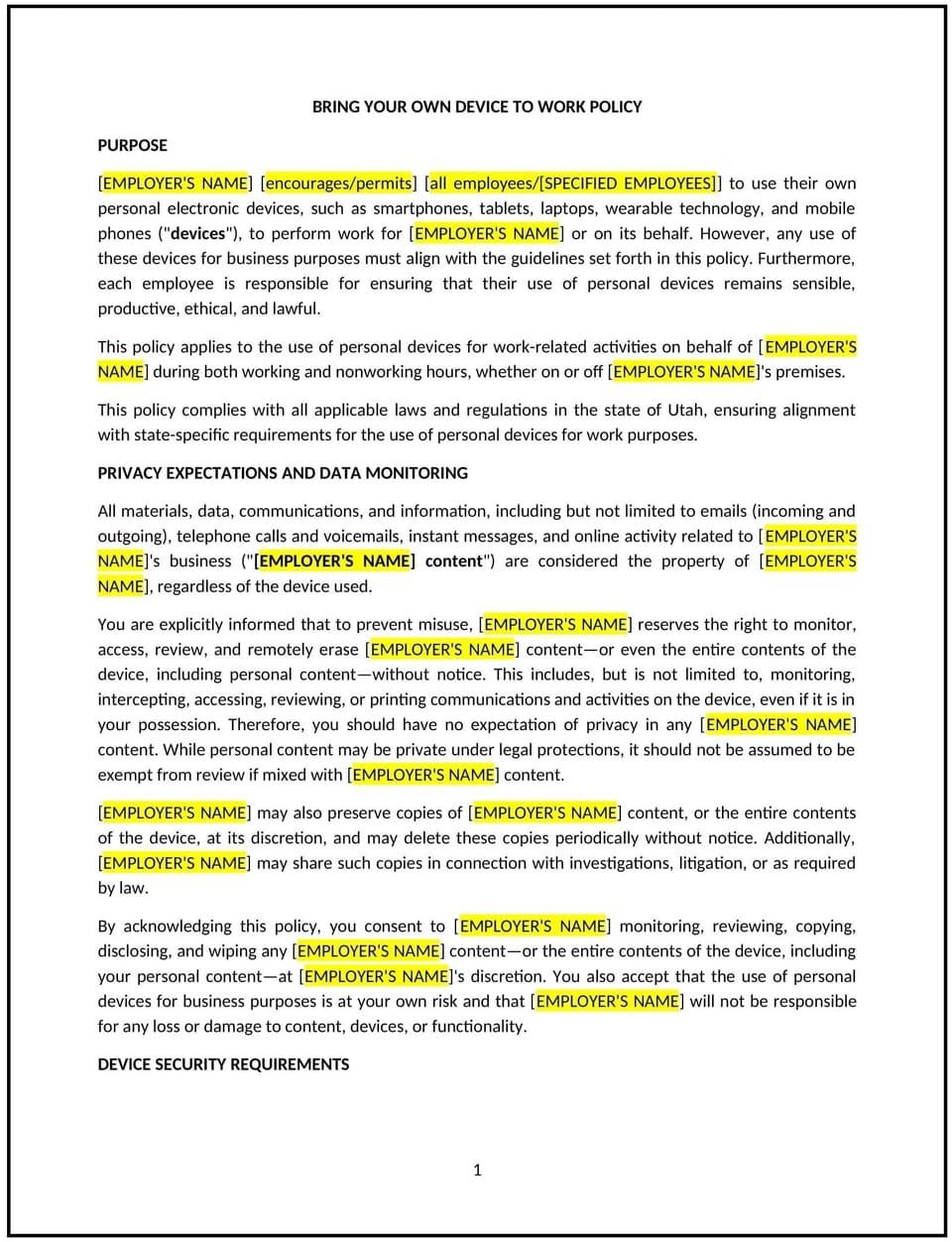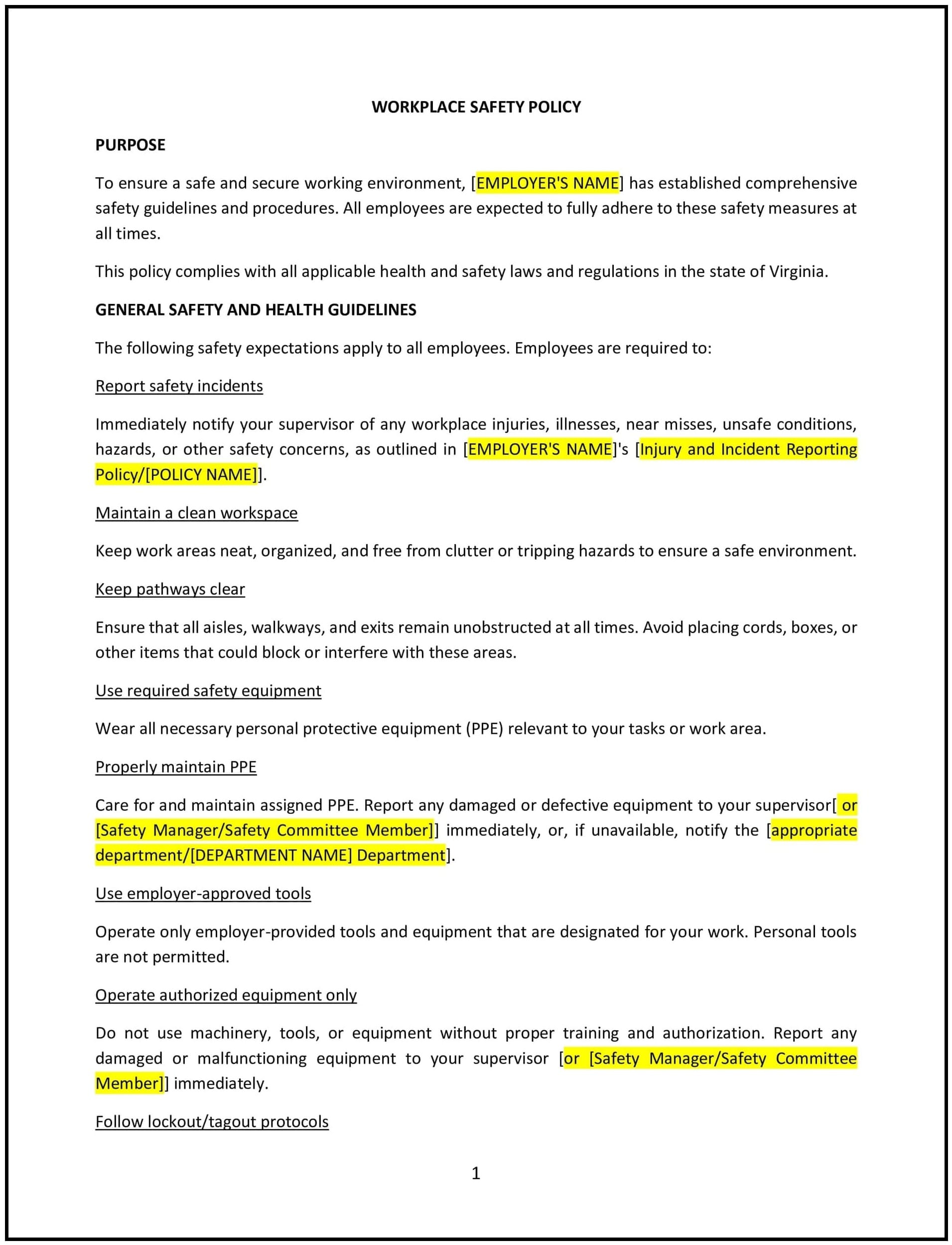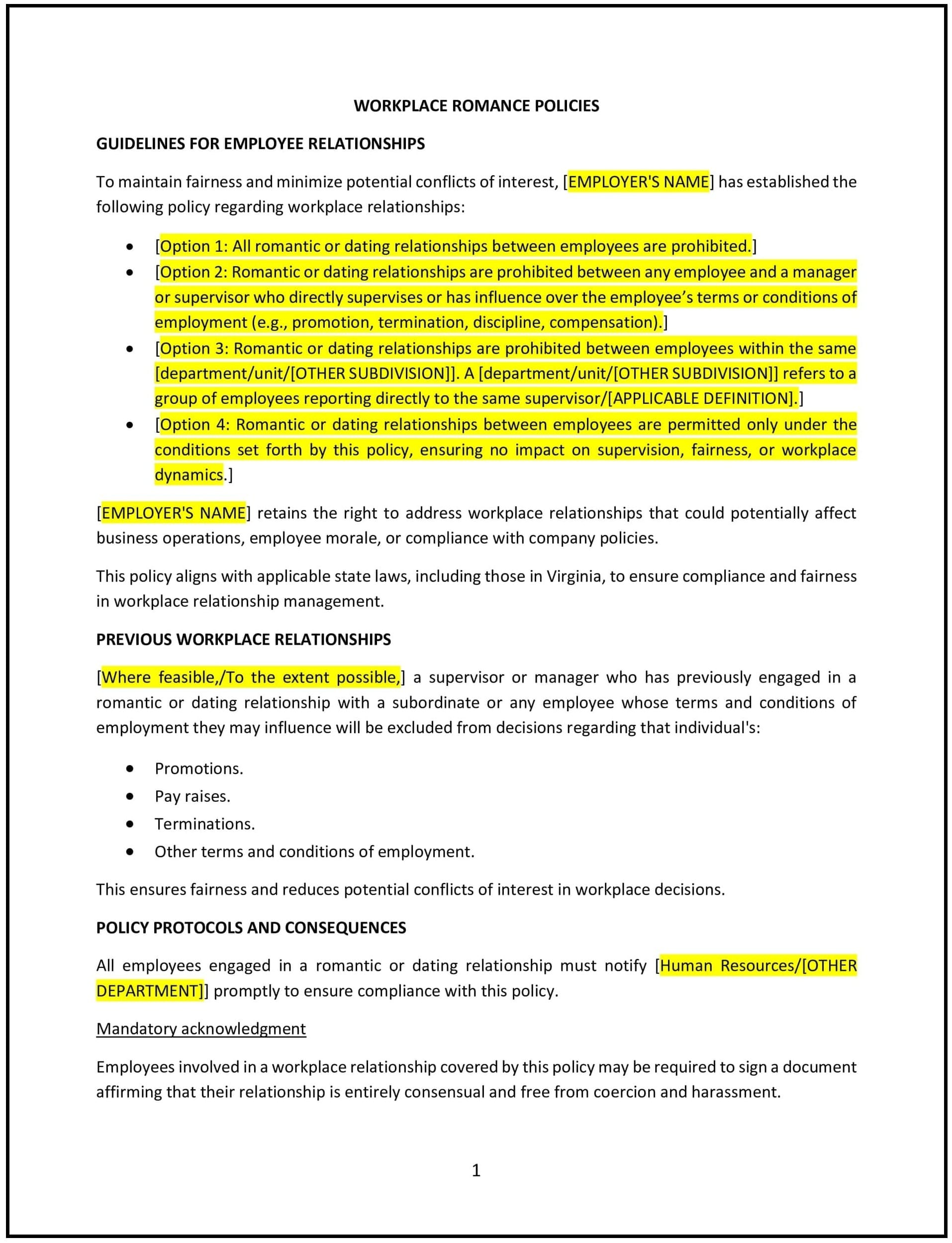Bring your own device to work policy (Utah): Free template

Bring your own device to work policy (Utah)
This bring your own device (BYOD) to work policy is designed to help Utah businesses establish guidelines for employees who use personal devices, such as smartphones, tablets, or laptops, for work purposes. It outlines security measures, acceptable use, and procedures for managing personal devices in the workplace.
By adopting this policy, businesses can enhance flexibility, reduce costs, and align with general best practices for managing BYOD programs.
How to use this bring your own device to work policy (Utah)
- Define scope: Specify which types of personal devices are allowed for work purposes.
- Establish security measures: Require password protection, encryption, and regular software updates on personal devices.
- Outline acceptable use: Define what constitutes appropriate and inappropriate use of personal devices for work.
- Provide access controls: Limit access to sensitive company data and systems based on employee roles.
- Address privacy concerns: Clarify the business’s rights to monitor or access personal devices used for work.
- Train employees: Educate employees on security best practices and the risks of using personal devices.
- Review and update: Regularly assess the policy to ensure it aligns with evolving technology and security needs.
Benefits of using this bring your own device to work policy (Utah)
This policy offers several advantages for Utah businesses:
- Enhances flexibility: Allows employees to work remotely or on-the-go using their preferred devices.
- Reduces costs: Minimizes the need for businesses to provide company-owned devices.
- Improves productivity: Enables employees to work more efficiently with familiar tools.
- Aligns with best practices: Provides a structured approach to managing BYOD programs.
- Protects data: Reduces risks by implementing security measures for personal devices.
Tips for using this bring your own device to work policy (Utah)
- Communicate the policy: Share the policy during onboarding and include it in the employee handbook.
- Provide training: Educate employees on security best practices and the risks of using personal devices.
- Monitor compliance: Regularly review device usage to ensure adherence to the policy.
- Update security measures: Stay current with technology trends and update security requirements as needed.
- Address privacy concerns: Be transparent about the business’s rights to monitor or access personal devices.
Q: How does this policy benefit businesses?
A: By allowing employees to use personal devices, businesses can reduce costs, enhance flexibility, and improve productivity.
Q: What security measures should businesses implement for BYOD programs?
A: Businesses should require password protection, encryption, and regular software updates on personal devices.
Q: How can businesses protect sensitive data on personal devices?
A: Businesses can limit access to sensitive data, use secure apps, and implement remote wipe capabilities for lost or stolen devices.
Q: What should businesses do if an employee’s device is lost or stolen?
A: Businesses should have procedures in place to remotely wipe company data from the device and notify the employee.
Q: How often should businesses review this policy?
A: Businesses should review the policy annually or as needed to ensure it aligns with evolving technology and security needs.
This article contains general legal information and does not contain legal advice. Cobrief is not a law firm or a substitute for an attorney or law firm. The law is complex and changes often. For legal advice, please ask a lawyer.


